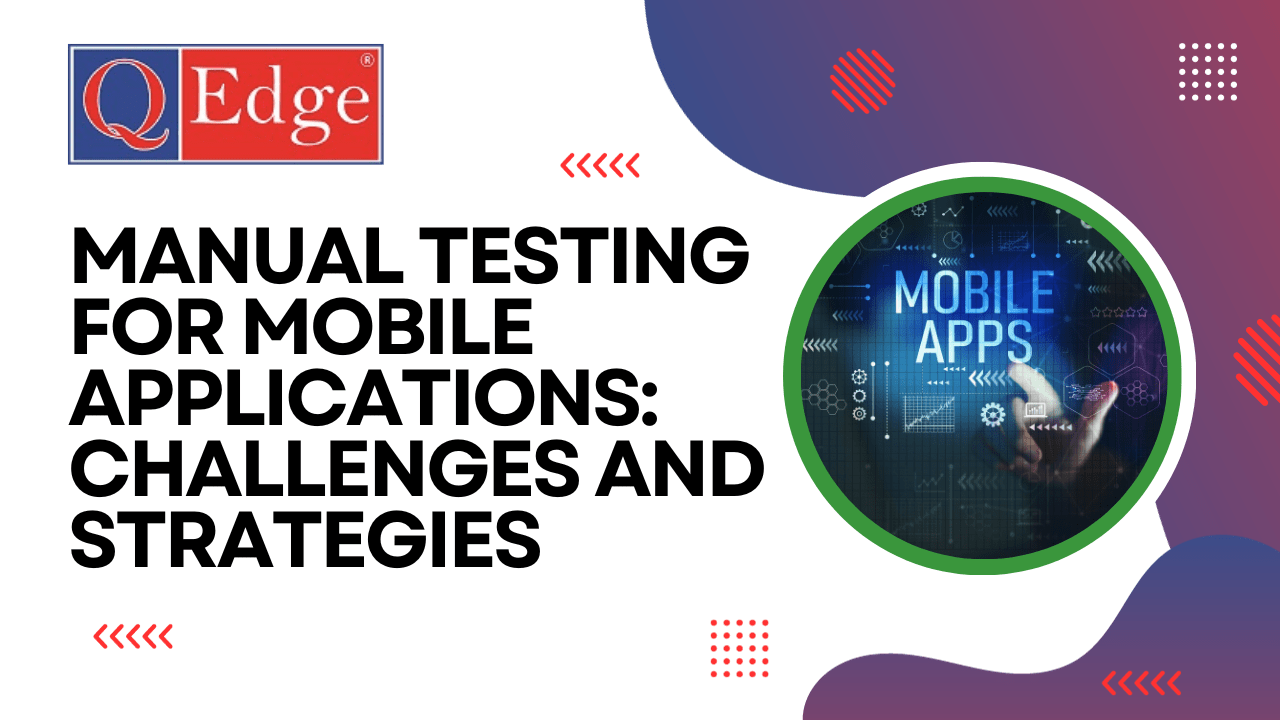Manual Testing for Mobile Applications: Challenges and Strategies

Introduction:
Manual testing plays a critical role in ensuring the quality and reliability of mobile applications. As the usage of mobile devices continues to rise, professionals seeking to gain expertise in manual testing can greatly benefit from manual testing training online courses.
Challenges in Manual Testing for Mobile Applications:
Manual testing for mobile applications poses several unique challenges that testers need to overcome:
- Device Fragmentation: The wide variety of devices, operating systems, and screen sizes in the mobile ecosystem presents a challenge for manual testers. Testing on different devices requires thorough coverage to ensure consistent functionality and visual appeal across various platforms.
- Operating System Versions: Mobile applications must be compatible with multiple operating system versions, each with its own unique features and APIs. Testers need to ensure that the application functions as intended on different operating system versions without any compatibility issues.
- Network Variability: Mobile applications rely on various network conditions, including 3G, 4G, and Wi-Fi. It is crucial to test the application’s performance under different network environments to ensure its responsiveness and seamless user experience.
- User Interface and User Experience: The user interface (UI) and user experience (UX) are critical for mobile applications. Testers need to ensure that the UI elements are properly rendered, the application is intuitive, and the overall user experience is smooth and engaging.
- Touchscreen Interactions: Mobile applications heavily rely on touchscreen interactions. Testers must thoroughly test touch gestures, multi-touch functionality, and responsiveness to ensure accurate and smooth user interactions.
- Battery Consumption and Performance: Mobile applications should be optimized to minimize battery consumption and ensure optimal performance. Testers need to assess the application’s impact on battery life, performance under various usage scenarios, and resource utilization.
Strategies for Effective Manual Testing of Mobile Applications:
To address the challenges associated with manual testing for mobile applications, testers can employ several strategies:
- Test Planning and Strategy: Testers need to carefully plan their testing approach, considering the target devices, operating system versions, and network conditions. Developing a comprehensive test strategy ensures adequate test coverage and effective utilization of resources.
- Device Selection: Testers should prioritize testing on a diverse range of devices, representing various screen sizes, operating systems, and manufacturers. This helps ensure that the application functions consistently across different devices, reducing the risk of device-specific issues.
- Emulators and Simulators: Emulators and simulators allow testers to emulate different device configurations without physically owning each device. These tools enable efficient testing on a wide range of devices, reducing costs and time associated with device procurement.
- Usability and User Experience Testing: Thorough usability and user experience testing is essential to ensure an intuitive and engaging mobile application. Testers should focus on assessing the application’s ease of use, navigation, responsiveness to touch gestures, and overall user satisfaction.
- Network Testing: Mobile applications often rely on network connectivity. Testers need to evaluate the application’s performance under different network conditions, including low bandwidth, unstable connections, and network interruptions.
- Security Testing: Mobile applications handle sensitive user data, making security testing crucial. Testers should identify potential security vulnerabilities, ensure secure data transmission, and validate authorization and authentication mechanisms.
- Battery and Performance Testing: Battery consumption and performance directly impact user satisfaction. Testers should assess the application’s impact on battery life, resource utilization, and performance under various scenarios, including high user load or prolonged usage.
Gaining Expertise through Manual Testing Training Online:
To excel in manual testing for mobile applications, professionals can benefit from manual testing training online courses. These courses provide comprehensive instruction on manual testing techniques, strategies, and best practices specific to mobile applications. By gaining expertise through online training, testers can effectively address the challenges and implement the strategies outlined above, ensuring the delivery of high-quality and user-friendly mobile applications.
Conclusion:
Manual testing plays a crucial role in ensuring the quality and exceptional user experience of mobile applications. Testers face unique challenges related to device fragmentation, operating system versions, network variability, UI/UX, touchscreen interactions, and performance. By employing effective strategies such as comprehensive test planning, device selection, utilization of emulators and simulators, usability and user experience testing, network testing, security testing, and performance testing, testers can overcome these challenges. Professionals seeking to enhance their skills in manual testing for mobile applications can leverage the benefits of manual testing training online courses. By mastering these skills, testers can effectively contribute to the success of mobile application testing efforts and ensure the delivery of mobile applications that meet user expectations.
